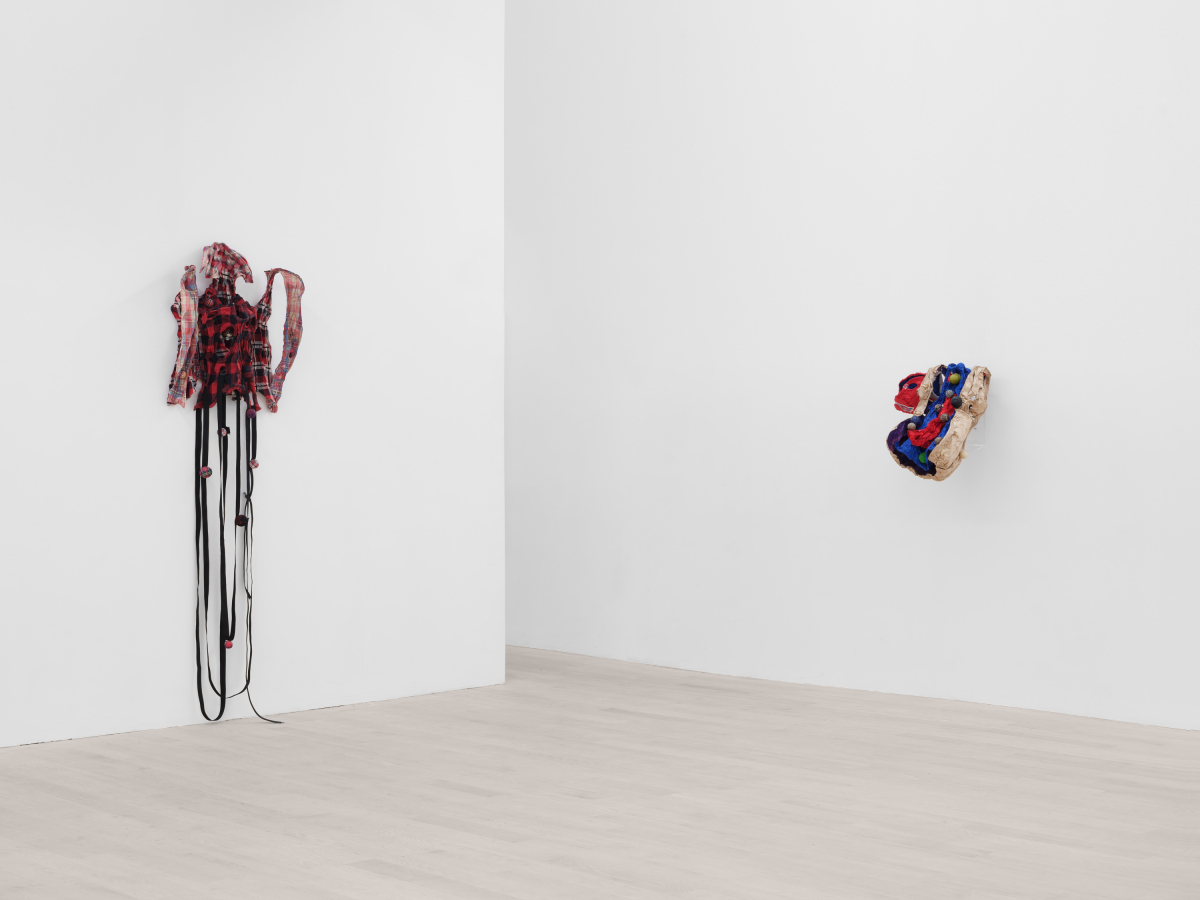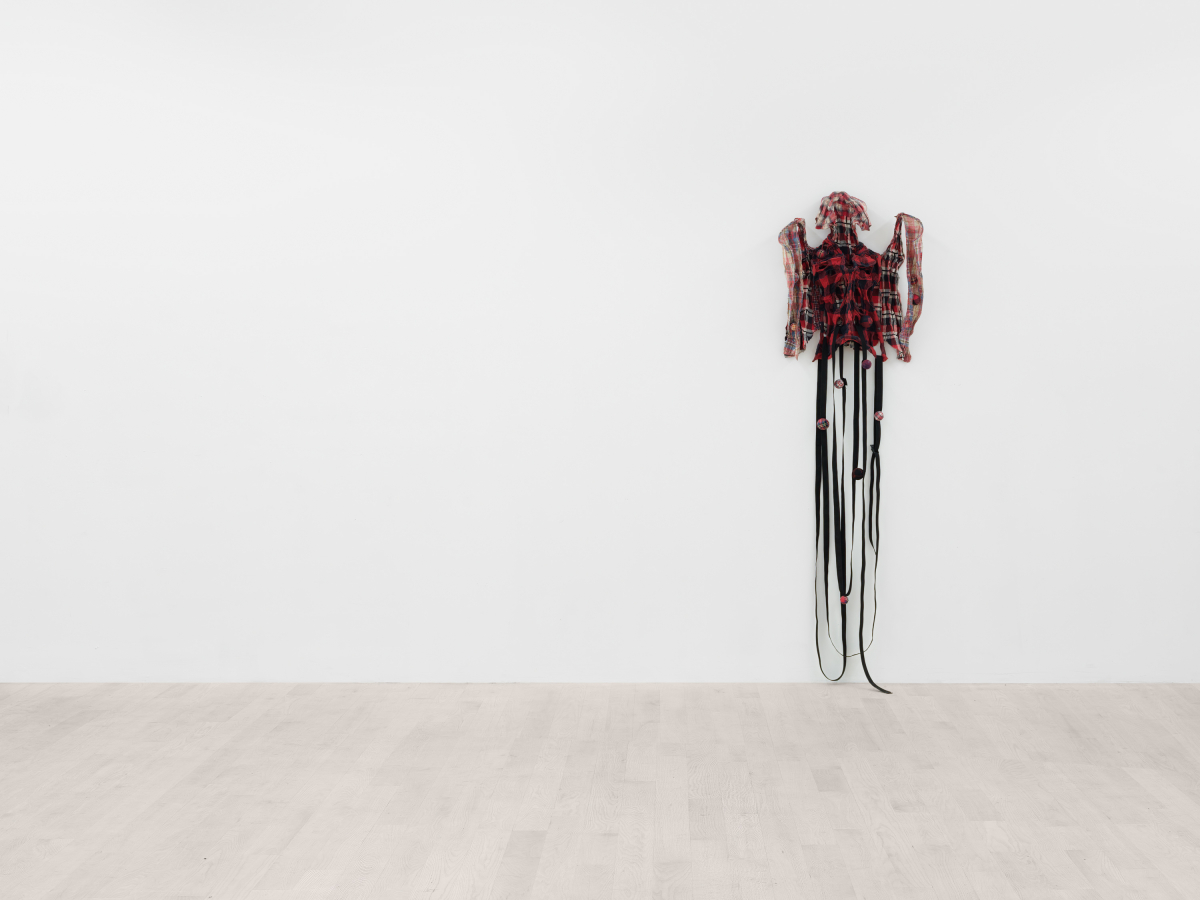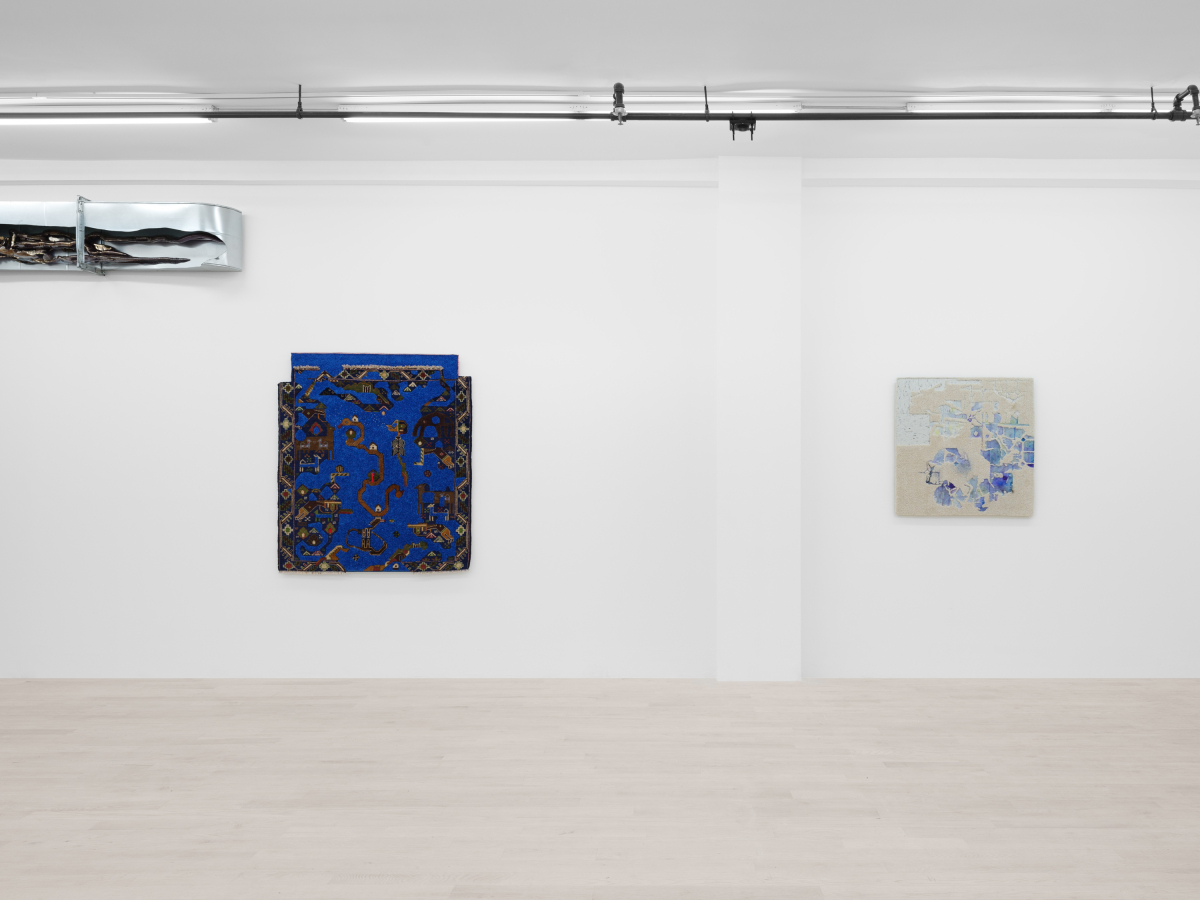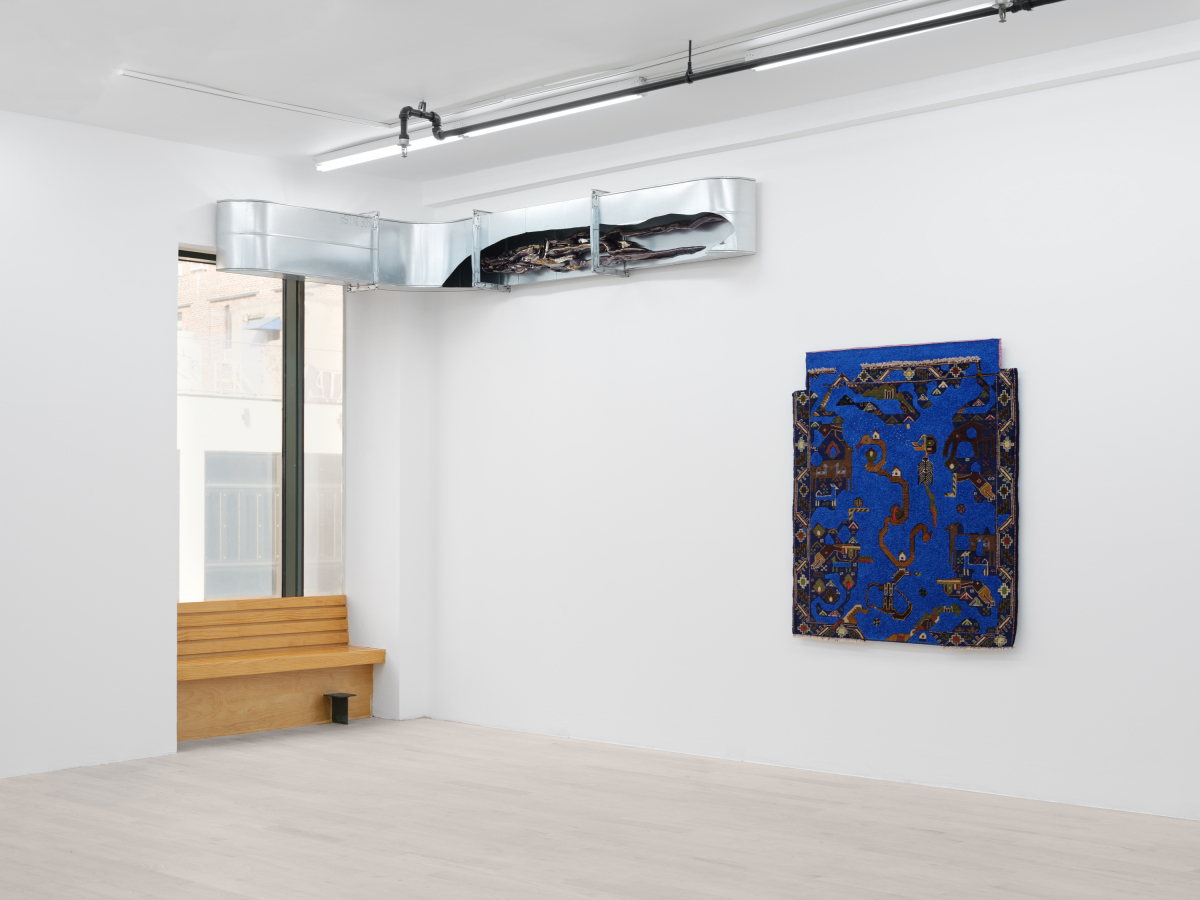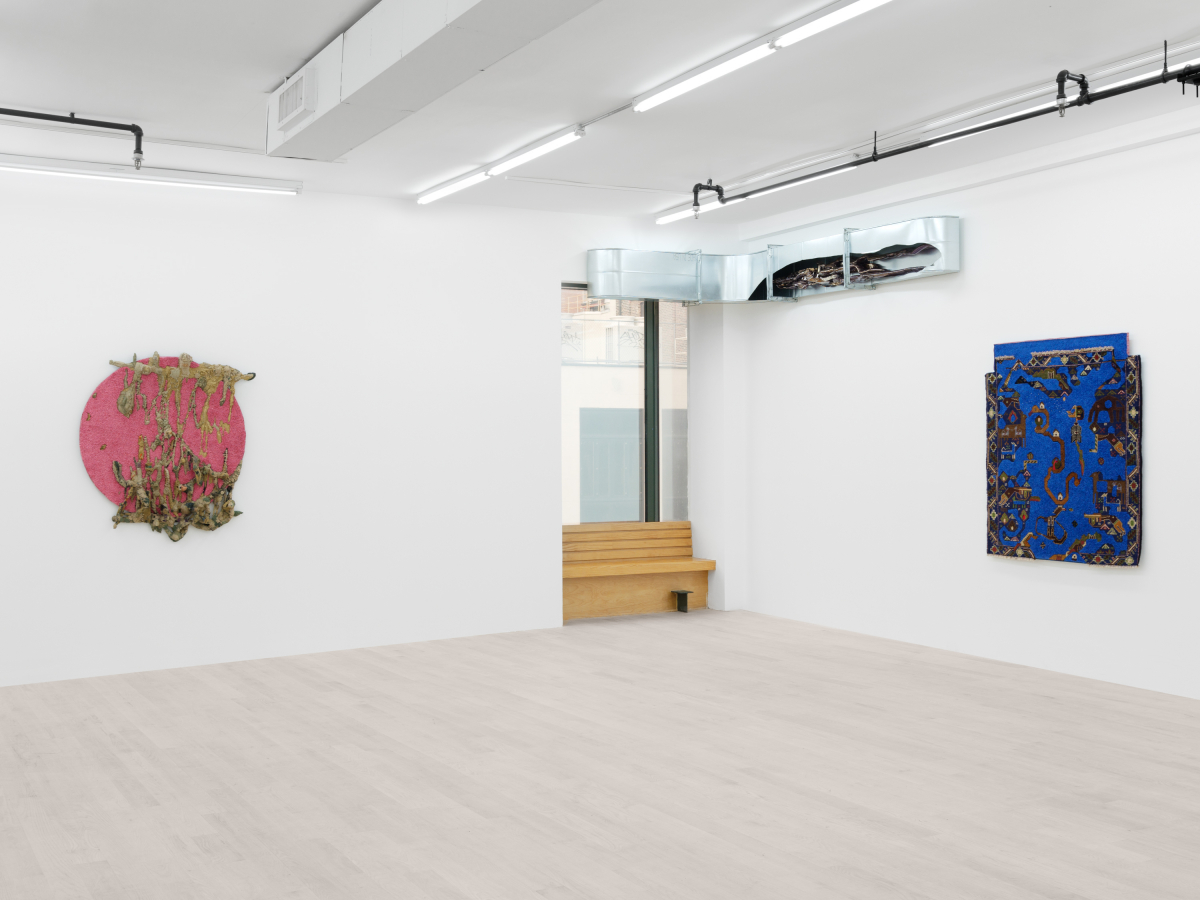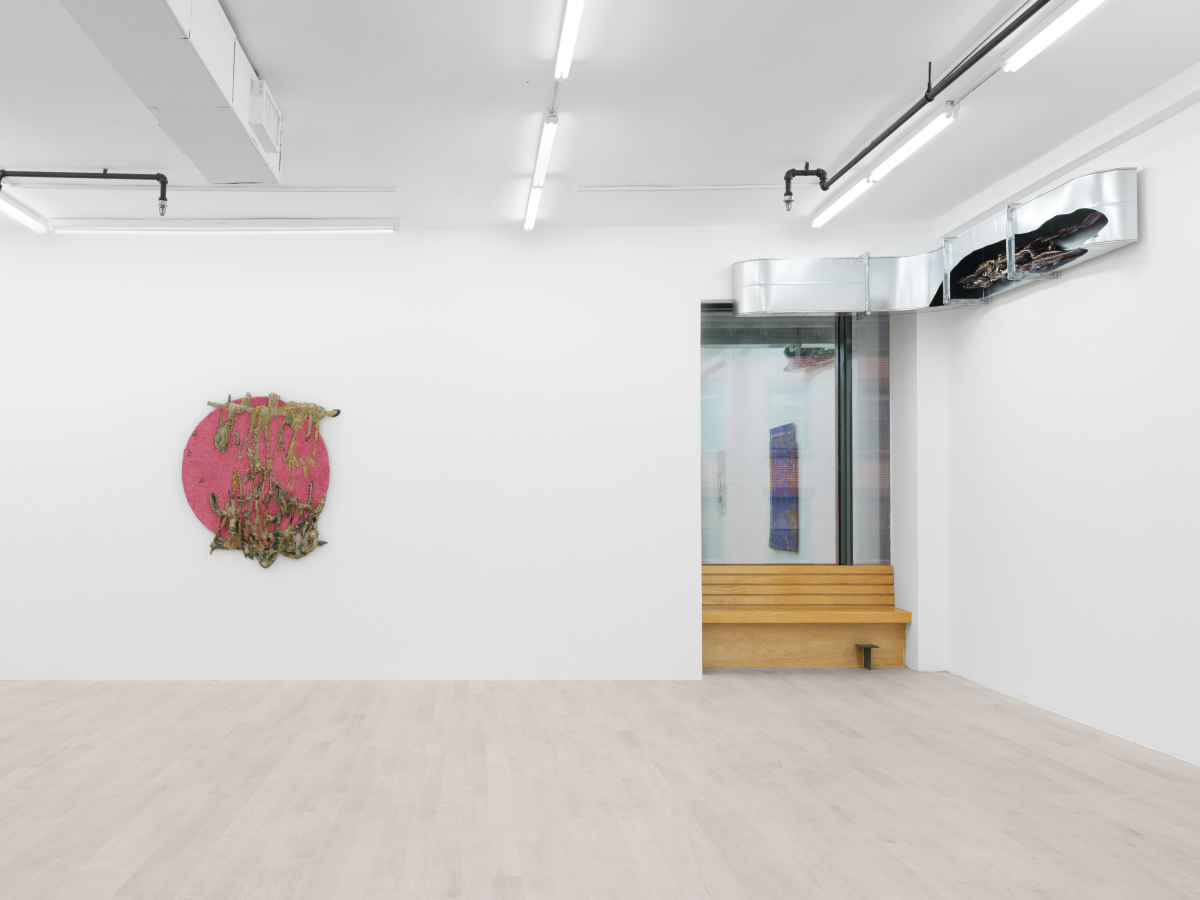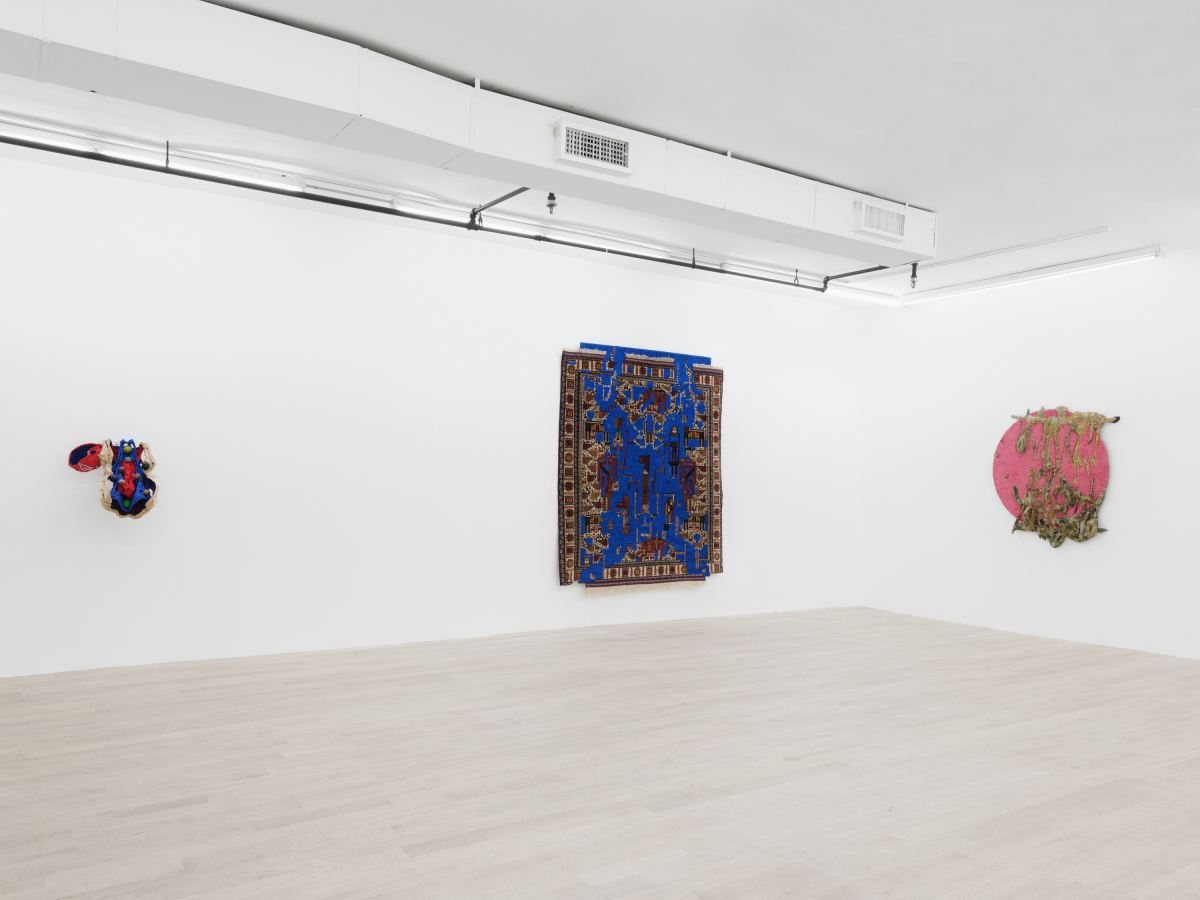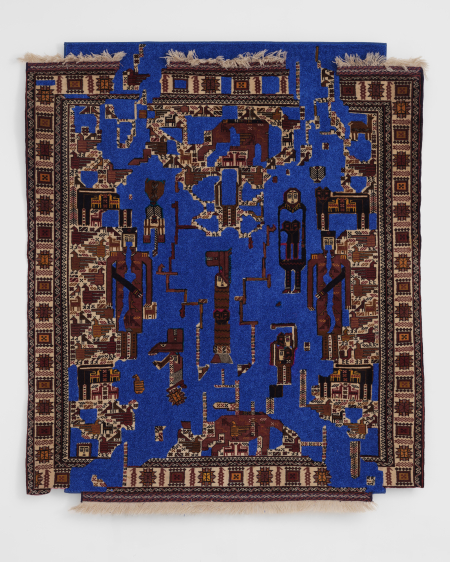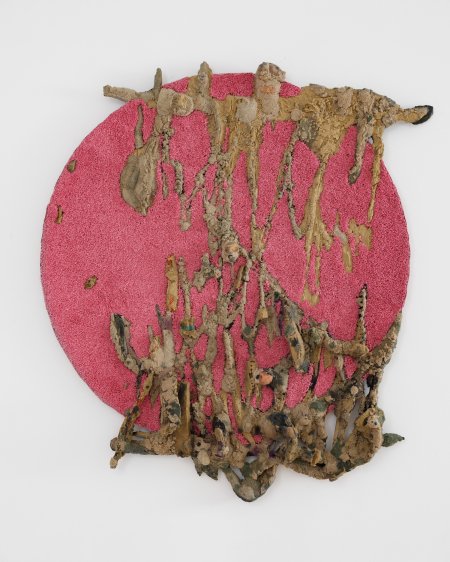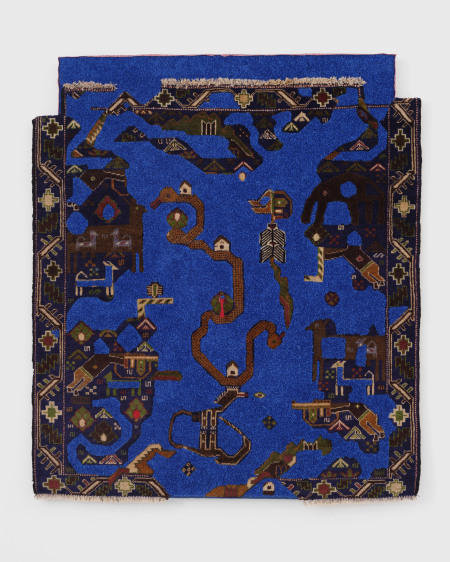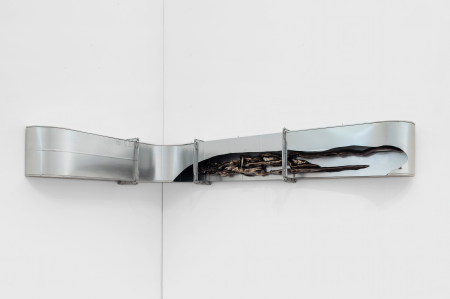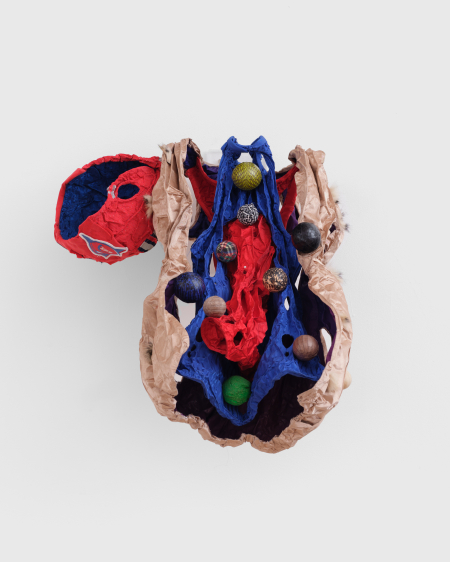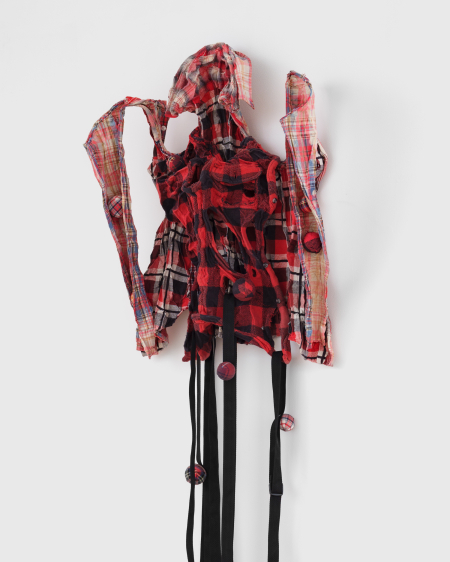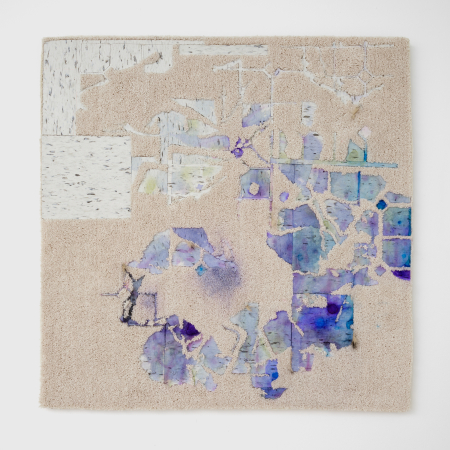Menu
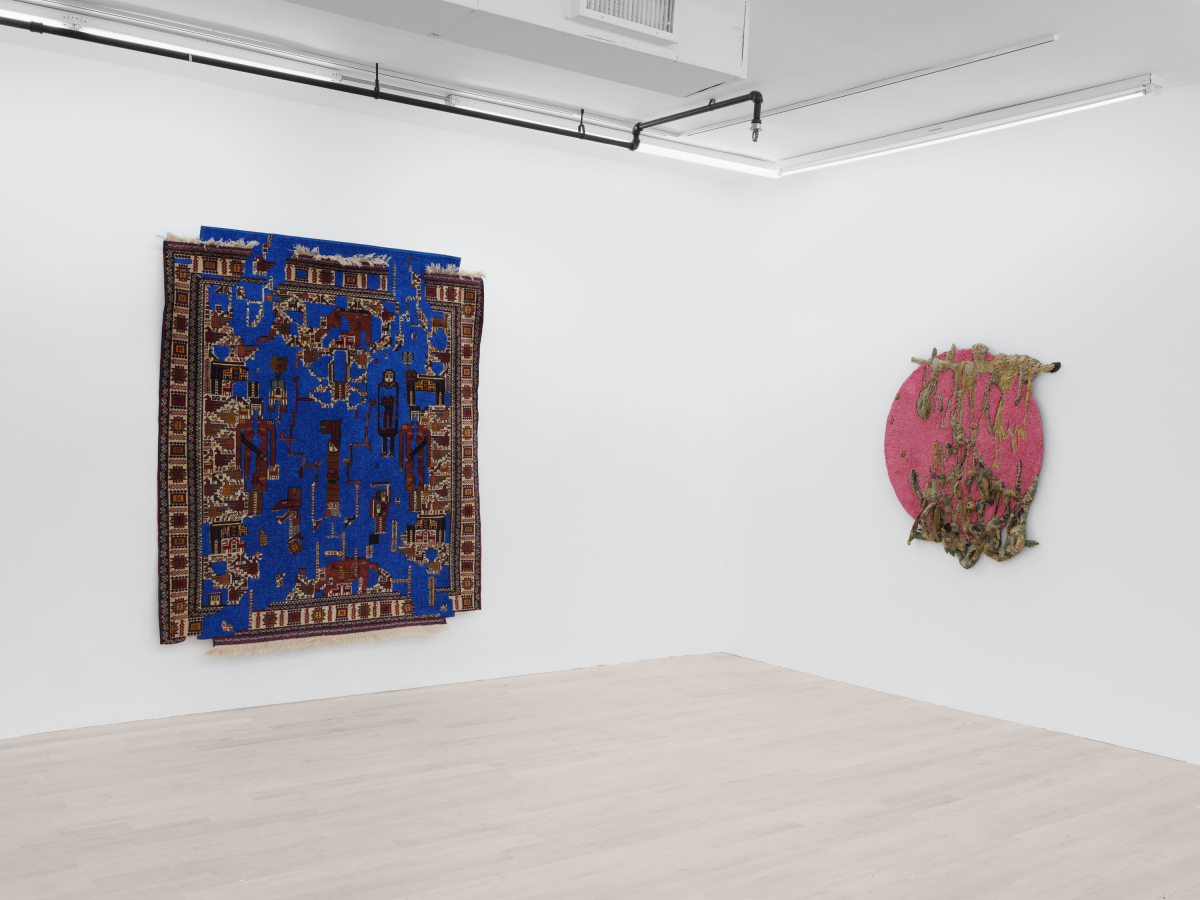
The Village Bites Itself, Installation View
Management is pleased to announce The Village Bites Itself, Asif Mian’s first solo exhibition with a commercial gallery in New York. The Village Bites Itself is Mian’s first solo exhibition in New York since RAF, his expansive show at the Queens Museum in 2021.
———
Cinching writing and cutting together in a single act, Mian uses a hot knife to carve an X, flocked and pipetted with sand, transforming it into a metastasizing, mutating form that functions as a repository for shrapnel of rock and glass. It resembles a lattice carved out of the earth’s crust, itself delimited into blocky zones where people do or don’t count. A stylistic allergy towards binaries folds—their resurgence heralds the eschaton.
The X also evokes formal diagrams of chromosomal recombination during human reproduction. For years, genetics has offered Mian a set of conceptual starting points in the studio, for instance, in drawings made of parsed threads that resemble alleles. It also provides an allegorical language to think about kinship and a conception of a human organism that is written to the smallest measure. This digital understanding of the human is appealing to Mian, whose sculptural vernacular of wrought rigidified fabric, hybrid textiles, carved sand glyphs, and industrial ducts, is instantiated like a series of scripts. Mian’s experiences with infinitely light, thin digital objects perfectly wrapped in repeating, flexible patterns, inflect his facility for binding, skinning, and marring simple forms into animate, spectral presences.
Mian integrates material to emphasize, not transcend, a split. He conceives himself as a hybridized, but unsynthesized, text. The level syntax of his rug sculptures—planar, ordered, exacting—belies a mind that constantly modulates its own proclivities towards extremes. The titles of two of these works refer to scarring and poisoned roots, suggesting an anterior thrust to his thinking: a tendency to look for a previous, more fundamental wrong. In his search for a prior act of rending, he inevitably traverses back home, his spiral path there punched in blue out of the smaller Afghan carpet. Shirts, rugs, jerseys, that can be imagined crumpled in the corner of a bedroom, or quickly removed and draped over a piece of furniture, are flayed, riven with apertures, and splayed open. The exhibition’s palette is domestic and ravaged. Like Haneke, he sees the home as an arena in which quiet degradation presages social murder. The inaugural coordinates of permission and law laid down in childhood also demarcate the possibility of inflicting grievous injury and getting away with it. This tacit condoning is given as a birthday gift, or a lesson.
To plumb one’s lineage for explanation risks being delivered only madness. That’s the gambit. Another wager, a lifeline: couched in the metaphors of inheritance and mutation, Mian’s real concern is theodicy. It is not a question of origins, but of vindication perennially deferred: then, we shall see face to face. In the meantime, the conviction that nothing that anyone does is unintelligible, is a salve.1 And so, Mian cuts familiar, familial archetypes out of a spray of phenomena with an expediency born of this belief in intelligibility. Today, there is no topic other than slaughter and its meaning. All else is reconstruction, mere technique.2 Once again, our thanatophilic, permissive culture debases and cheapens life warmly in private, before pulverizing it on the world’s stage.
— Vijay Masharani
Asif Mian (b. Jersey City, NJ), earned a BS in Biology (Genetics) & BA in Studio Art from Drew University, an MFA from Columbia University (2018), and attended the Skowhegan School of Painting and Sculpture (2018). Mian’s multi-chapter project, RAF, was the focus of a 2021 solo exhibit at the Queens Museum for the Queens Museum-Jerome Foundation Emerging Artist Award. Mian has also exhibited at The Kitchen for the Whitney ISP curatorial exhibition, The Shed: Open Call, BRIC, and Queens Museum for ‘Queens International: Volumes’. Recently, Mian was awarded the 2022 Rema Hort Mann Foundation Emerging Artist Grant and participated in the Okayama Art Summit 2022, curated by Rirkrit Tiravanija.
1 Alain Badiou, Our Wound is Not So Recent (Originally delivered at La Commune theatre, Aubervilliers, on November 23, 2015) [online, https://miguelabreugallery.com/wp-content/uploads/2016/09/AlainBadiou_OurWoundisNotSoRecent.pdf]
2 Theodor Adorno, Minima Moralia: Reflections on Damaged Life, (New York and London: Verso, 2005), p. 247.

